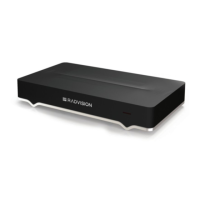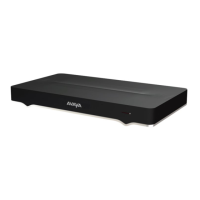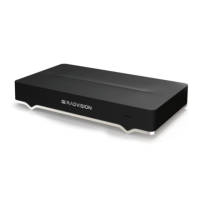Figure 73: Location Settings
2. Enter the following settings:
Table 29: Setting the display name
Field Description
System Name Display
Mode
Select the criterion for the system to display its name:
• Select Automatic to automatically choose the name based on the deployment.
First, it displays the system name if you have assigned it manually, then it displays
the SIP username if registered to a SIP registrar or proxy, and if that is unavailable,
it displays the H.323 name if registered to a gatekeeper, and if that is unavailable,
it displays the unicode name.
• Select System Name Unicode to display the System Name Unicode field, which
allows non-alphanumeric characters such as Chinese or Japanese. This name is
also seen by the remote party in a SIP or H.323 call, if the remote party supports
unicode characters.
• Select SIP: to display the SIP username, used to register your system to the SIP
server. This is the same as the System Name, unless you change it manually (see
Registering the XT Series to a SIP Server on page 133).
• Select H.323 to display the H.323 name, used to register your system to the
gatekeeper. This is the same as the System Name, unless you change it manually
(see Configuring Advanced Gatekeeper Settings on page 161).
• Select System Name to display the System Name field, which supports only
alphanumeric characters.
• Select Hostname to display the Hostname field. This is typically the same as the
System Name, unless the System Name includes characters not supported by
the hostname standard. Invalid characters are replaced by the - character.
Table continues…
Configuring Advanced System Name Settings
August 2020 Deployment Guide for Avaya XT Series 153
Comments on this document? infodev@avaya.com

